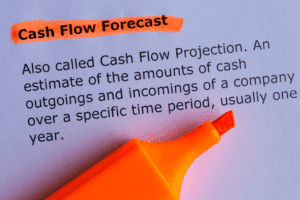
Companies typically will use their short-term assets or current assets (such as cash) to pay them. In business, liabilities are any debts, outstanding payments, loans, mortgages, accounts payable, or anything else your business owes to a bank, suppliers, or another company. In short, liabilities are the opposite of total assets a company owns. Liabilities are a fundamental component of financial statements, providing a snapshot of a company’s financial obligations at a given point in time. They are primarily presented on the balance sheet, where they are categorized into current and non-current liabilities.
Non-Current (Long-Term) Liabilities: Examples and Significance
Payments towards liabilities reduce the company’s cash or other assets, impacting its overall financial position. Proper management of liabilities involves assessing repayment capabilities, negotiating favorable terms, and strategically balancing short-term and long-term obligations. Long-term liabilities are listed on the balance sheet after current liabilities.
Accounting Equation Cheat Sheet
If it goes up, that might mean your business is relying more and more on debts to grow. In Year 1, the business had $585,037 in total assets, made up of $234,674 in current assets and $350,363 in non-current (fixed) assets. Each section is totaled separately, and then both are added together to show the total liabilities. This helps anyone reviewing the balance sheet to quickly see how much the business owes now versus later. These types of liabilities usually don’t appear on the balance sheet unless there’s a high chance they’ll happen and the amount can be reasonably estimated. Otherwise, they’re just disclosed in the financial statement notes.
Example 1 – Current Liabilities
- Keep your financial obligations in check to protect your stability.
- Liabilities like accounts payable or loans directly impact owners’ equity by reducing net worth compared to total assets.
- The ordering system is based on how close the payment date is, so a liability with a near-term maturity date will be listed higher up in the section (and vice versa).
- Accounts payable, accrued liabilities, and taxes payable are usually classified as current liabilities.
It’s particularly useful for evaluating the sustainability of long-term debt. These are short-term obligations that a business must settle within one year. Managing current liabilities effectively is essential to maintaining smooth day-to-day operations. In this blog, we’ll break down liabilities in accounting in the simplest terms possible. You’ll learn what liabilities are, their types, how they’re calculated, and how they impact your financial statements. Liabilities expected to be settled within one year are classified as current liabilities on the balance sheet.

Expenses are what your organization regularly pays to fund operations. The commitments and debts owed to other people are known as liabilities. Assets are what a company owns or something that’s owed to the company. They include tangible items such as buildings, machinery, and equipment as well as intangibles such as accounts receivable, interest owed, patents, or intellectual property. Companies of all sizes finance part of their ongoing long-term operations by issuing bonds that are essentially loans from each party that purchases the bonds.
- Bonds Payable represent money borrowed by issuing debt securities to investors, with repayment scheduled over several years.
- In accounting, liabilities represent what a business owes to other parties.
- For instance, you pay rent for the office space you operate out of.
- Liabilities are a big part of managing money for people and businesses.
- If you’ve promised to pay someone a sum of money in the future and haven’t paid them yet, that’s a liability.
- It is clear from the IASB definition that liabilities that are recognized must be current ones, and these arise from past events.
- Liabilities play a crucial role in financing operations, facilitating transactions between businesses, and impacting financial performance in various ways.
Types and examples
Cash and other resources that are expected to turn to cash or to be used up within one year of the balance sheet date. The two “turnover” ratios in the above list highlight that it is not sufficient to merely have accounts receivable and inventory. These current assets must also be converted to cash in time to pay the company’s obligations when they come https://hyclubbd.com/3-000-finance-accounting-jobs-in-san-francisco/ due. The amount results from the timing of when the depreciation expense is reported. Investors and creditors analyze current liabilities to understand more about a company’s financials.

What are the Different Types of Liabilities on the Balance Sheet?
Until the company delivers the services or goods, the company has an obligation to deliver them or to refund the customer’s money. When they are delivered, the company will reduce this liability and increase its revenues. In order to issue a company’s financial statements on a timely basis, it may require using an estimated amount for the accrued expenses. Other accrued expenses and liabilities is a current liability that reports the amounts that a company has incurred (and therefore owes) other than the amounts already recorded in Accounts Payable. Accounts payable represents Remote Bookkeeping the amounts owed to vendors or suppliers for goods or services the company had received on credit.

Deskera also provides a free mobile app for business accounting where you can keep a tab on your business from anywhere and get access to all financial reports. These liabilities are accounting liabilities crucial in assessing a company’s long-term financial health. If a company can’t meet its long-term obligations, it could face solvency issues—a fancy way of saying it might go belly up.
Once the utilities are used, the company owes the utility company. Accounts Payable – Many companies purchase inventory on credit from vendors or supplies. When the supplier delivers the inventory, the company usually has 30 days to pay for it.
